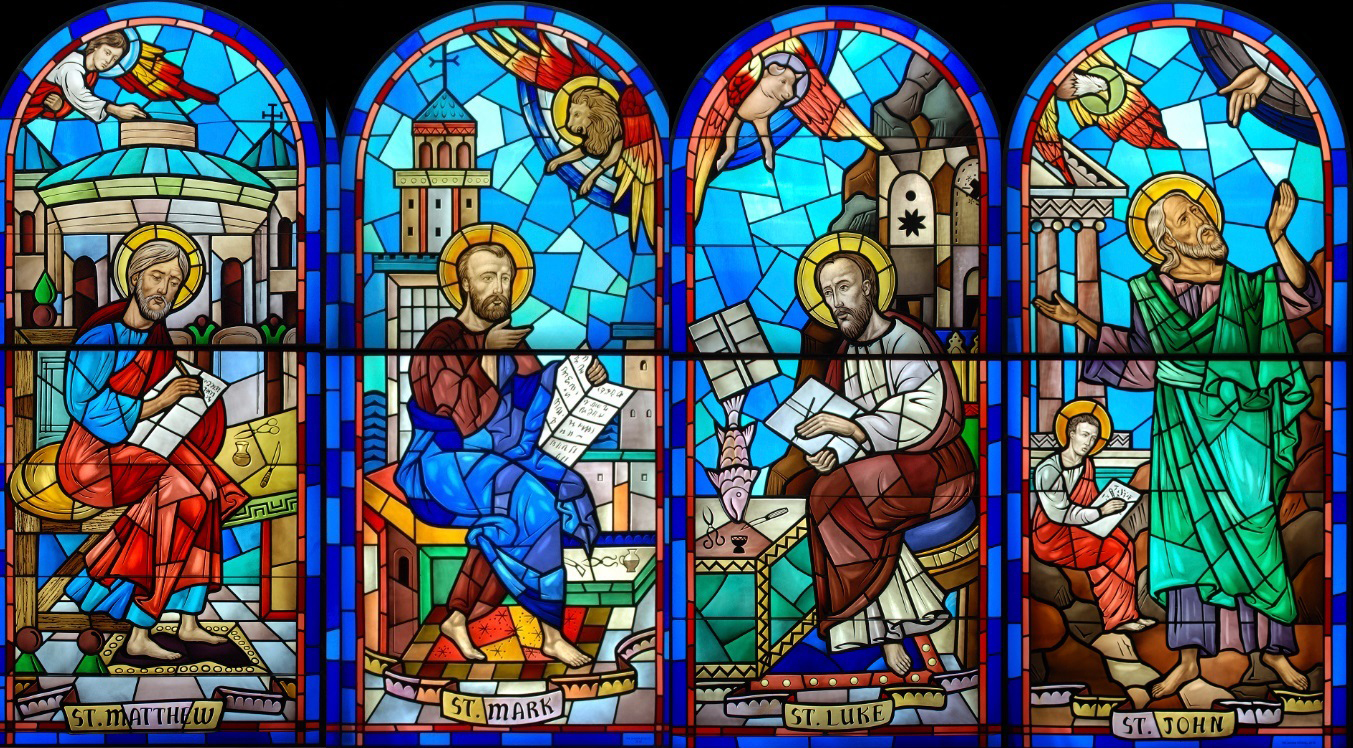The New Testament contains four Gospels: Matthew, Mark, Luke, and John. As I have mentioned in previous posts, the Gospel of John belongs to the tradition of Johannine Gnosticism and Johannine Gnosticism is based on the Idealism of Plato.
Consider the qualities traditionally associated with each Gospel. Matthew is the Gospel for the Hebrews, Mark is the Gospel for the Romans, Luke is the Gospel for the Greeks, while John manages to out-rank all three by being the Gospel for Christians. There is also a temporal set of attributes: Matthew is the Gospel of the Past, Mark is the Gospel of the Present, Luke is the Gospel of the Future, and John? John triumphs again by being the Gospel of Eternity!
My view is that even among the canonical Gospels we have two basic sorts of texts: Thomasine and Johannine. I designate the Gospel of John as a Johannine text, obviously, while I group the three Synoptic texts together and call them Thomasine. Before we get into just why I label the Synoptic Gospels as belonging to the Gnosticism of Thomas we should first examine the word 'Synoptic' itself.
The word 'Synoptic' means 'to see (optic) and together (syn).' It refers to the fact that near-identical parallel passages can be found in all three texts. Books have been printed up with the various parallel passages arranged on a single page in separate columns. This allows for the three versions to be compared as they can all be 'seen together.'
According to Biblical scholars, the first of the Synoptic Gospels, Mark, was probably written between 66–70 AD. The second, Matthew was written between AD 70 to 110, while the third, Luke, was written between 80–110 AD. Matthew and Luke both copied from Mark. In addition, it is believed that The authors of Mathew and Luke had access to a hypothetic collection of sayings which they independently drew from in order to add to the material taken from Mark. This document is called Q named for the German word for 'source' which is 'Quelle.'
The hypothesis of Q is meant to explain the structure and content of the various Synoptic Gospels. Mark is the shortest Gospel. It contains the basic story told in a simple and direct manner. This is one indicator that it is the earliest because as a story is retold it tends to become longer and more elaborate. So someone whom we will call Matthew, for convenience only, got ahold of Mark's text and rewrote it, adding in additional material he had discovered in a copy of Q. Coincidentally another someone, whom we will call Luke, found a copy of Mark as well and, as fortune would have it, Luke also happened to have a copy of Q to refer to. Then Luke, independently of Matthew, decided to go ahead and rewrite Mark while adding sections from Q.
For some reason, that scenario strikes me as improbable. Yes, it explains the structure and content of the Synoptic Gospels but for two authors to independently decide to modify the same text using the same external and hypothetical source seems rather unlikely.
My own approach is identical to the Farrer–Goulder–Goodacre hypothesis, which is that first Mark was written, then Mark was used, along with some additional material, to create Matthew. Finally, both Mark and Matthew were drawn from to create the Gospel of Luke.
The one question that remains is why are there these nearly identical clusters of parallels. Was their creation accidental? Did each author of the Gospel envision his version of the Gospel story being packaged and read independently of the rest? Surely the author of Mark thought this but perhaps the authors of Matthew and Luke had some inkling of the triadic structure they were in the process of creating.
This is the crux of the matter if these clusters of parallels were created intentionally then what is their purpose. To understand that we will have to delve into a subject that may seem terribly off topic. However, make no mistake, we will never grasp to the true nature of the Synoptic Gospels without first understand the mechanism beyond the creation of memory systems.
We will examine memory systems and their relevance to the study of the Synoptic Gospels in my next post.

No comments:
Post a Comment